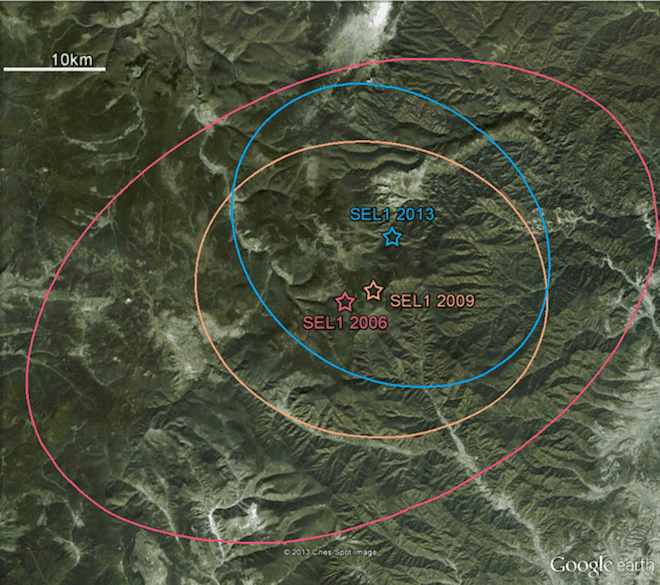
While the world was asleep, a few days ago North Korea made its latest nuclear test, the third that we know of. This has prompted intense international pressure on the North Korean regime, as you might imagine, what’s interesting, rather frightening actually, is that seismic activity shows the nukes are getting ever bigger.
Pyongyang said that the test was designed to bolster its defenses due to the hostility of the United States, which has increased sanctions on the country after the latter demonstrated long-range missile capabilities. The claim is rather preposterous itself, since South Korea warned the world that the North was prepping for a new nuclear test since last year. A failed, so called satellite launch, also from last year prompted increase concerned, even from behalf of China, North Korea long time and traditional ally.
Politics aside, however, let’s see what science can tell us about North Korean nukes. This latest test, the third, seems to follow previous trends, since the first one was made in 2006, while 2009 saw the second. As you can imagine, the North didn’t test their nukes on the surface or in the ocean – this wouldn’t have gone unretaliated.
Obviously, these tests were made underground, and like any explosion, nuclear or otherwise, it causes a seismic event. Now, seismic waves aren’t uniform and the science behind seismology is rather complicated, however based on the speed of the wave and magnitude of the caused earthquake (5.1 on the Richter scale), scientists can extrapolate the data and estimate the yield of the nuclear weapon. An increase in seismology monitoring stations around North Korea has help a lot in this respect.
Based on this, it’s believed the 2006 test yielded a blast of less than 1 kiloton, the 2009 test was caused by a blast between 4 and 7 kilotons, while this third one must have been around 10 kilotons. So in less than seven years, North Korean has reached a tenfold increase in their nuclear weapons damage capabilities.
North and South Korea have been at war for more than half a century, and although in the past few decades the countries have been at truce, various skirmishes between them have occurred. Tension and pressure felt by the two countries, and the whole world for that matter, seem to have never been as great as today, however. While North Korea is believed to be significantly technologically outdated in terms of military power, it still boasts a one million, well trained army and loads of chemical and biological weapons. Security analysis predict that if a full blown conflict were to erupt between the two countries, the death toll would reach one million in the first 24 hours.


